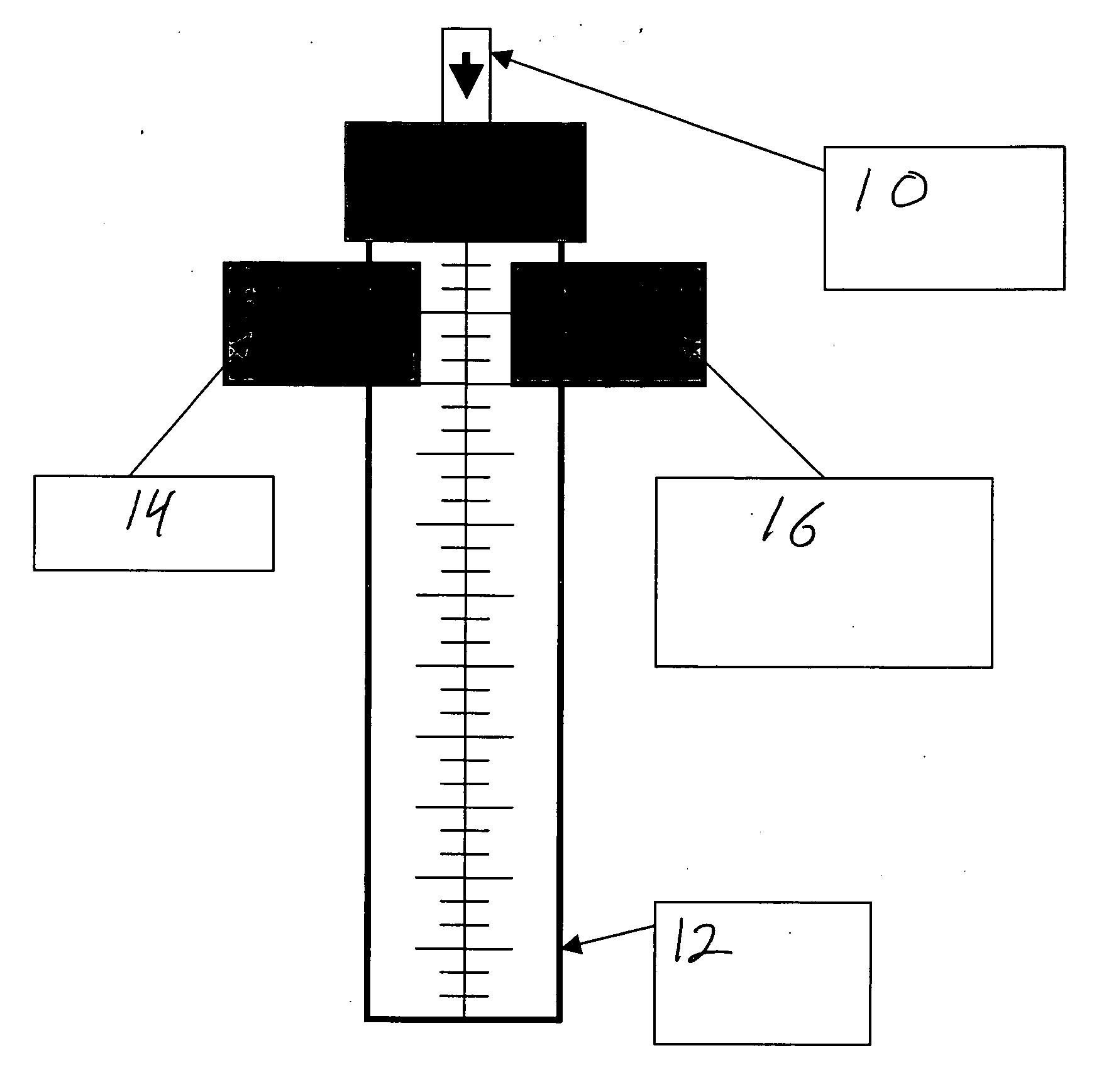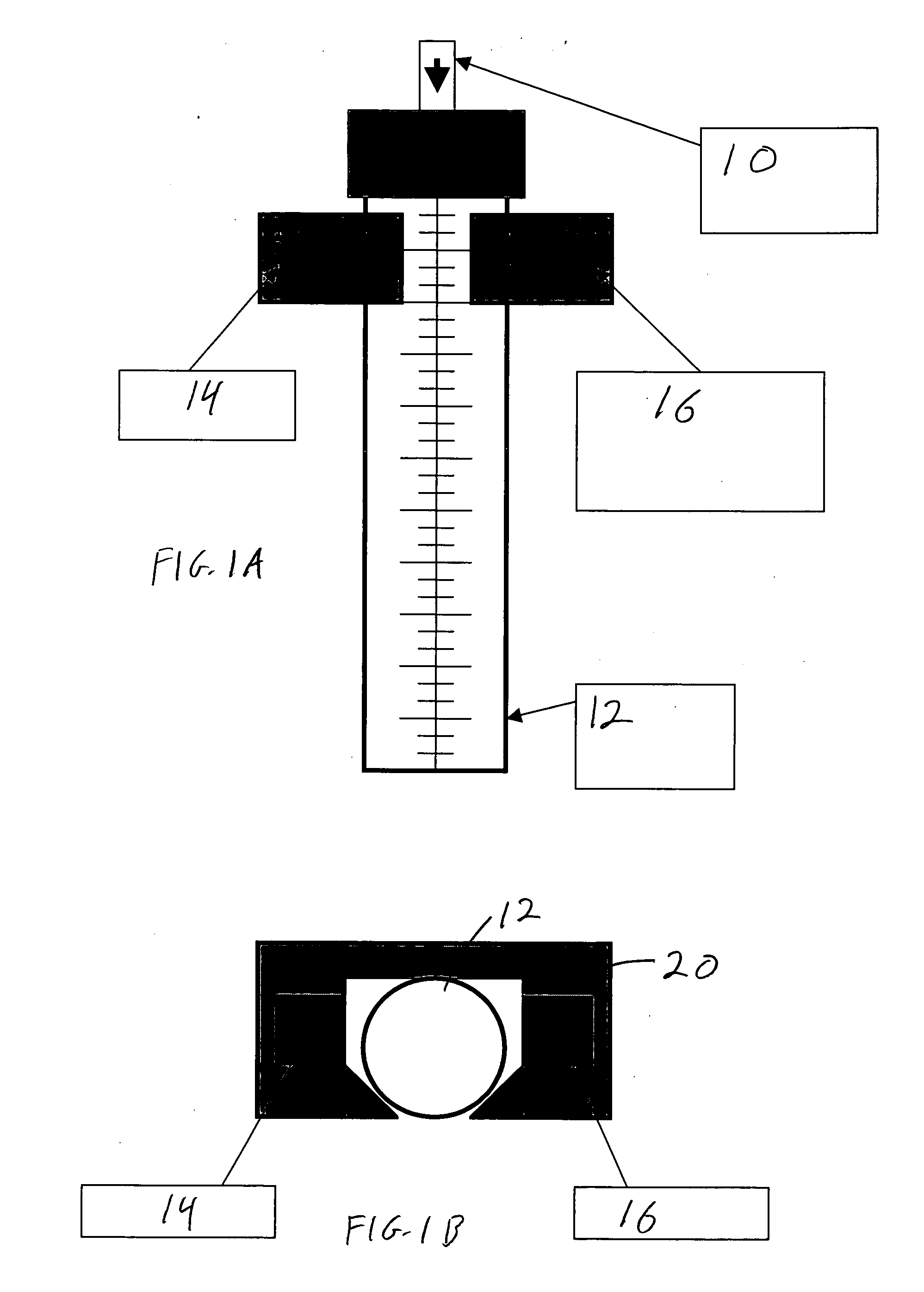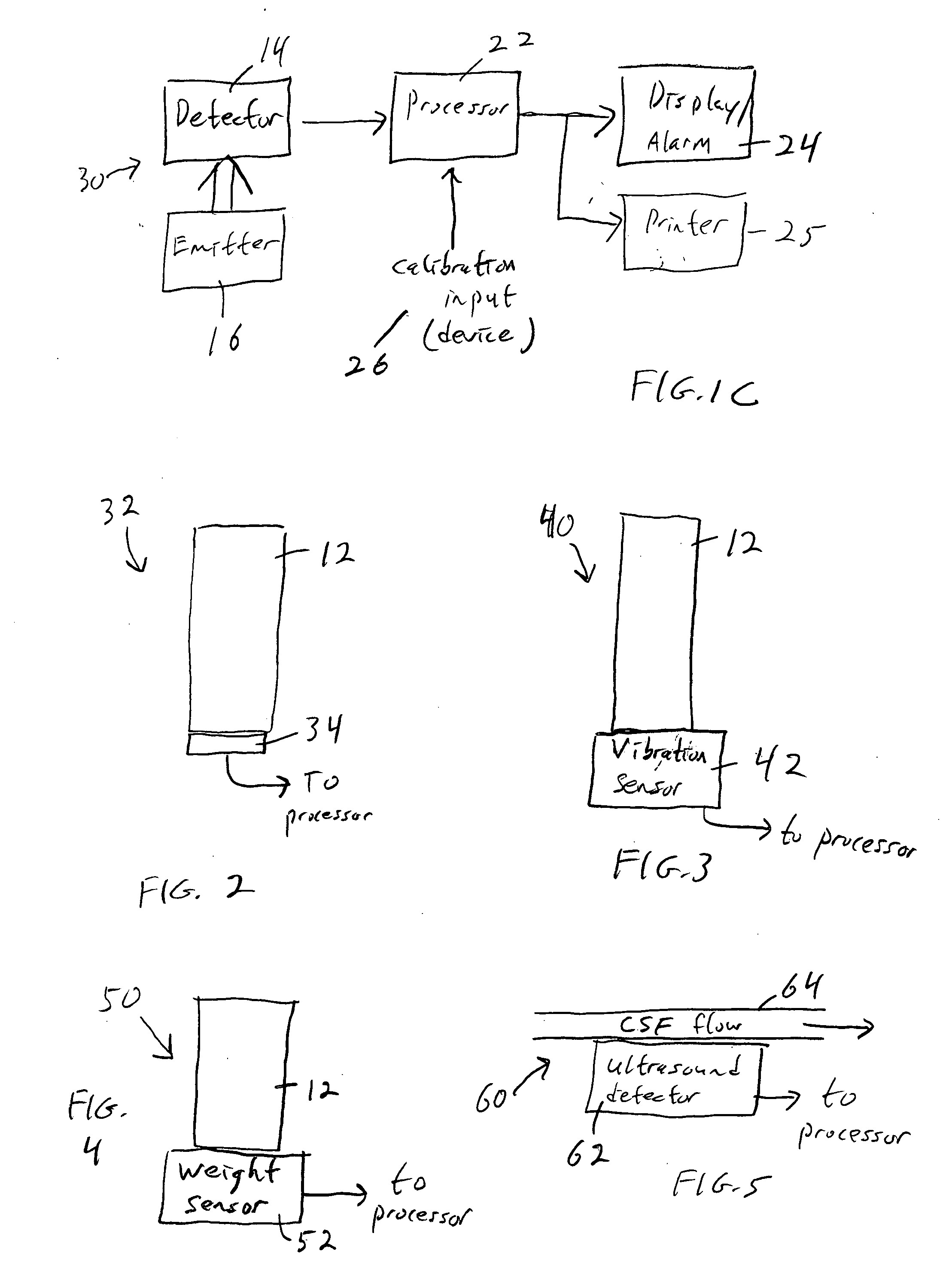System and method for measuring the rate of flow of cerebral spinal fluid into an external ventricular drainage mechanism
a technology of cerebral spinal fluid and rate of flow, which is applied in the field of system and method of measuring the rate of flow of cerebral spinal fluid into an external ventricular drainage mechanism, can solve the problems of patient's brain, csf that should flow from the brain to be trapped, injury or even death,
- Summary
- Abstract
- Description
- Claims
- Application Information
AI Technical Summary
Benefits of technology
Problems solved by technology
Method used
Image
Examples
embodiment 40
[0034] Yet another alternative embodiment 40, FIG. 3, is based on vibration. A drop of CSF falling into a collected volume in the EVDM collection apparatus (e.g. collection tube 12) causes a vibration in the volume. A sensor 42 that is excited with every drop that falls into the fluid (e.g. a pressure sensor) is connected to a microprocessor that counts the vibrations and calculates the rate and flow of CSF during a given period of time. If no vibrations are detected for a given period of time an alarm will activate.
[0035] This arrangement would employ a sensor that is on the inside of the tube, but with leads passing through the tube, the CSF will remain sterile. This method would allow the CSF to always be in a sterile environment and have no interaction with anything outside of the sterile interior of the EVDM.
embodiment 50
[0036] Yet another alternative embodiment 50, FIG. 4, works by detecting a change in mass of the collected CSF volume. Every time a drop of CSF falls into the collection tube 12, the total weight of the tube plus collected CSF increases. In other words, this arrangement would sense that the whole collection tube just gotten heavier. The weight is determined by sensor 52, which could be a scale or strain gauge, for example. A microprocessor then calculates the flow rate and total volume of CSF collected from the weight of the CSF that has been collected, and the weight change over time. If no weight change is detected for a given period of time, an alarm will be activated.
[0037] This arrangement would employ sensors that are on the exterior of the sterile EVDM collection container. This method would allow the CSF to always be in a sterile environment and have no interaction with anything outside of the sterile interior of the EVDM.
[0038] An alternative weight-based arrangement conte...
embodiment 70
[0041] Another embodiment 70, FIG. 6, uses changes in resistance. There are two ways to employ this arrangement. In a first method, every time the volume of a drop of CSF is added to the collected volume of CSF in tube 12, a slight change in the electrical conductivity, or resistance, of the total volume of fluid will be detected. Electrodes 72 and 74 are used for this purpose. With each additional volume (drop) of CSF added to the total volume collected, the conductivity will change. Again, a microprocessor can from these readings calculate the CSF flow rate and total collected volume. If there are no resistance changes sensed to the collected volume of CSF for a given period of time, an alarm will activate. This method may employ sensors and leads that are on the interior or exterior of the sterile EVDM's collection container. This method would allow the CSF to always be in a sterile environment and have no interaction with anything outside of the sterile interior of the EVDM.
[004...
PUM
 Login to View More
Login to View More Abstract
Description
Claims
Application Information
 Login to View More
Login to View More - R&D
- Intellectual Property
- Life Sciences
- Materials
- Tech Scout
- Unparalleled Data Quality
- Higher Quality Content
- 60% Fewer Hallucinations
Browse by: Latest US Patents, China's latest patents, Technical Efficacy Thesaurus, Application Domain, Technology Topic, Popular Technical Reports.
© 2025 PatSnap. All rights reserved.Legal|Privacy policy|Modern Slavery Act Transparency Statement|Sitemap|About US| Contact US: help@patsnap.com



